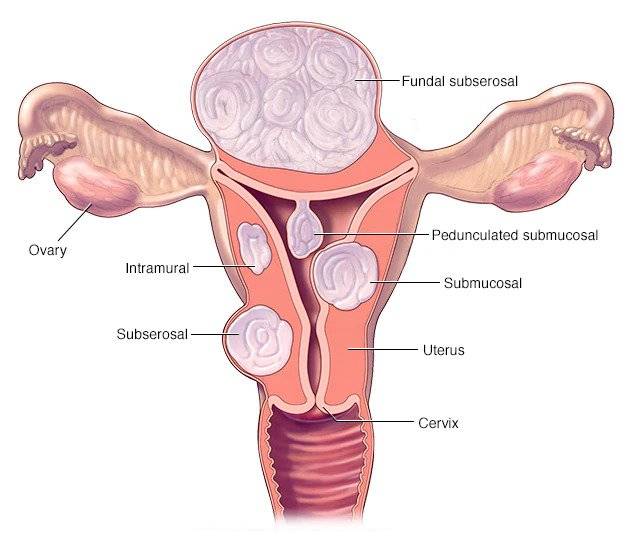What exactly are fibroids?
Uterine fibroids are the most frequent type of non-cancerous tumour that develops in or around the uterus. They are the most prevalent non-cancerous tumours in childbearing women.
They can form on the uterine surface (called subserosal fibroids), inside the uterine muscle (called intramural fibroids), or within the uterine cavity (called submucosal fibroids). Uterine fibroids can cause uterine pain and irregular bleeding. Fibroids can sometimes make it difficult for a woman to become pregnant or maintain a pregnancy.

Treatment for fibroids
Noninvasive surgery
Uterine Fibroid Embolization
Embolization is a non-invasive surgery that deprives fibroids of blood, causing them to shrink. A doctor will make a small incision in the groin area to insert a thin tube (catheter) into a major blood artery during an embolization. The tube is flexible, allowing it to slither along within the blood vessel until it reaches the fibroids, at which point a solution of microscopic plastic or gel particles is injected, cutting off the growth’s blood supply. This technique normally does not harm the uterus, which is still nourished by other blood veins. Embolization reduces the size of lesions by 50% or more.
This therapy is not suitable for everyone. Those who are suffering excessive bleeding and have uterine fibroids that are causing pain or strain on their bladders or rectums are the greatest candidates. The long-term effects on pregnancy are unknown, while some women report a higher chance of miscarriage. As a result, embolization is only advised for people who do not want to become pregnant in the future. The procedure is normally safe, although in certain circumstances it can cause difficulties.
Surgical Treatment
Endometrial ablation, myomectomy, and hysterectomy are the three surgical choices.
Endometrial Ablation
Endometrial ablation destroys the uterine lining (the endometrium). This procedure is performed to remove tiny fibroids from the uterus. Freezing, laser, electric current, instrumentation, or hot water can all be used to carry out the treatment. At times, a device that employs microwave energy to disintegrate the lining is used.
Pregnancy is made more difficult, but not impossible, by endometrial ablation. When pregnancy does develop, it is associated with an increased chance of miscarriage and other difficulties.
This outpatient surgery usually results in a speedy recovery for the majority of women. Approximately half of the individuals will no longer bleed throughout their periods. Around 30% will experience substantially lighter bleeding. Although problems can arise, they are uncommon with most endometrial ablation procedures.
Myomectomy
Myomectomy is the most promising surgical treatment for women who want to become pregnant. Myomectomy is used to remove fibroids while leaving healthy womb tissue intact.
This surgery can be done in a variety of methods and is considered a major surgery based on the extent of the procedure and the location of the fibroid. As a result, problems differ depending on the specifics of a certain surgery.
Hysterectomy
Hysterectomy is the only guaranteed and permanent treatment for uterine fibroids. Fibroids are removed from the ovary during hysterectomy surgery. In this procedure, although the hazards to one’s health are among the lowest of any major surgery. Despite this, major consequences such as blood clots, urinary tract and intestinal damage, severe infection can occur. The recovery period for a hysterectomy is usually several weeks.
Schedule your appointment and surgery with DR.ANSHUMALA SHUKLA KULKARNI for your fibroid treatment.
